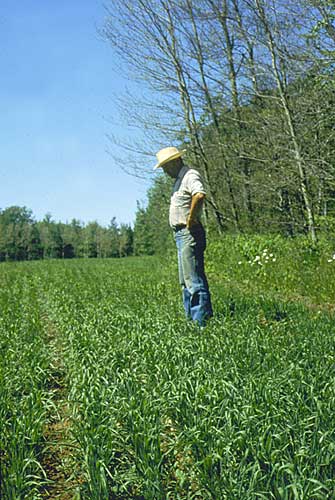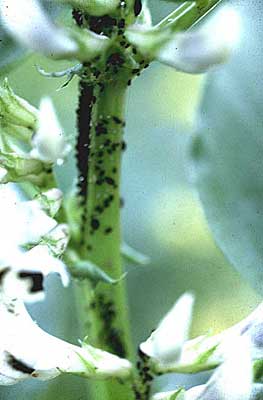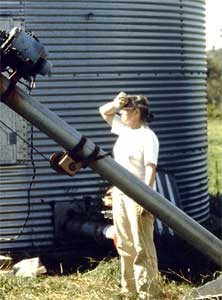OVERALLAs inferred from the early observations, there was ample nitrogen going into the farm via biological N2 fixation to support high cereal yields.It turned out the yields were limited by a completely unanticipated factor which was revealed in the course of scientific observations and experiments. Basil Aldhouse died in early 1985, but had lived to see his organic experiment work. I and several students helped Lilian Aldhouse to keep the farm going over 1985 and 1986. We maintained the oat yield, improved fababean yield and identified the limitations in wheat. We learned a lot about weeds and pests as well, and how they are affected by the way nitrogen is managed. |  |
 |
 Pests became prominent in plots fertilized with nitrogen (as urea): at left, aphids on fababeans; above: rust (fungus disease) on wheat. |
|
Lilian maintained the farm subsequently, but reduced the number of laying hens substantially. She died in 2009. Four of the dozen or so students who participated in my on-farm research at Tunwath and other farms today operate their own organic farms. - David P. |
 |
Literature | Frames Version